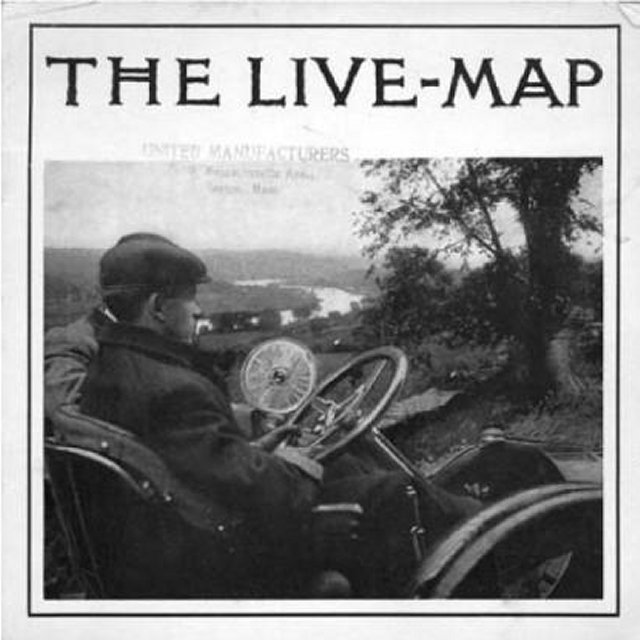As recalled in a new Saturday Evening Post article by Jeff Nilsson, the first GPS for automobiles was commercially available in 1909, the year after the initial iteration of Henry Ford’s Model T. (Nick Paumgarten covered similar terrain in 2006 in the New Yorker.) An excerpt:
“As if this wasn’t enough discouragement, there was the challenge of navigating. Road signs were rare and often incorrect. Travelers were frequently reduced to driving from one roadside stranger to the next, gathering a few miles of directions at a time. The earliest road maps by Rand McNally were printed only after 1904.
Yet a high-tech alternative appeared in 1909: a real-time, on-board directional guide called the Jones Live Map. It was invented by J. W. Jones, who had also introduced the Jones Speedometer, the Jones Disc Phonograph Record, and the Jones Yobel —’the gentlemen’s automobile horn.
The idea was revolutionary. The Live Map was a small turntable device with a cable that attached to an automobile’s odometer. Before making their journeys, drivers would purchase paper discs with the route to their destination prescribed by The Touring Club of America.
At the beginning of the journey, the driver would place his journey’s disc to the Live Map’s turntable so that the journey’s starting point lined up with an arrow indicator on the glass cover. As the car began rolling, the turning odometer cable caused the map to rotate. The arrow would point to the driver’s changing position in the journey.
Each disc had up to 100 miles of travel details around its perimeter. If the journey was longer than 100 miles, the driver would replace the first disc with a second, or third part.”
Tags: J. W. Jones, Jeff Nilsson, Nick Paumgarten

